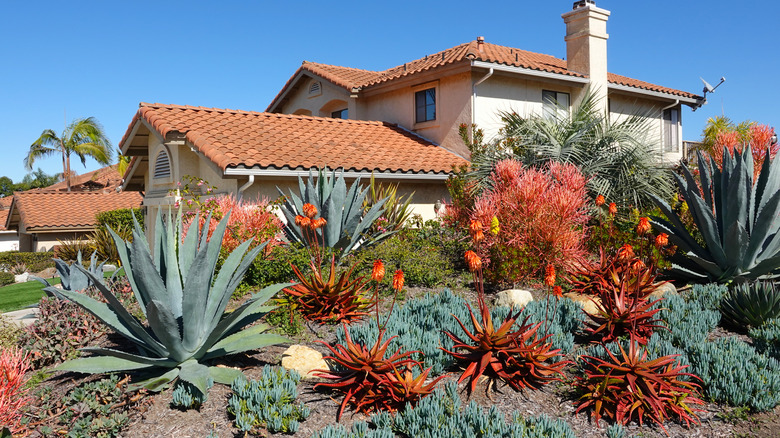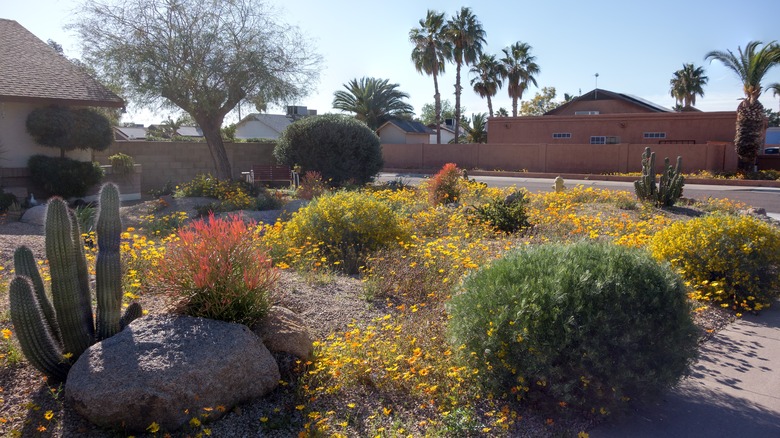What Is The Xeriscaping Trend And How Can It Help Your Garden In A Drought?
Xeriscaping simply refers to thoughtful landscaping that eliminates the need for an irrigation system and sprinklers. While xeriscaping is typically associated with red rock desert towns and agave plants, any home can choose to xeriscape. Moreover, as climate change impacts the world, wells and reservoirs dry up, and your water bill reaches new heights, those water-hungry lawns and plants may not seem as essential as they did before. If you are concerned about how to best prepare yourself and your home as drought reaches more of the continental United States, xeriscaping could in fact be the right choice for you and your garden.
It will undoubtedly present an upfront cost, especially if you plan to tear up your lawn and other non-indigenous plants, but in the long term, it will reduce your water costs significantly, and help preserve local water supplies. We'll talk you through xeriscaping practices and principles to help you determine whether it's time to say goodbye to that lawn.
What makes up a xeriscaped yard?
Xeriscaping has become particularly popular throughout the western United States, where water is viewed as a limited resource. Xeriscaping takes its principles from indigenous gardening and landscaping practices, which involve using native plants in the area that have had millennia to adapt to the climate. Essentially, they have become naturally tolerant to drought periods over time, meaning regular watering isn't required.
We may associate dense green lawns with the American dream, but the grasses we see dominating the yards of the suburbs are nowhere near American. For instance, Kentucky Blue Grass is not from Kentucky — it's actually native to Europe, Eurasia, and Asia. In fact, most of the turf grasses we see all around American yards are foreign, thirsty, and expensive. This means that your current lawn may not even survive future droughts and heat waves. The important thing with xeriscaping is finding plants that are native to your specific area, which means they can better rely on the natural environment instead of engineered irrigation.
How can I create a xeriscaped yard in my region?
Xeriscaping is not synonymous with zero-scaping. Many homeowners scoff at xeriscaping, fearing it will turn their yards into bland rock beds. In reality, it can make for some of the most vibrant, stunning landscaping. Native plants come in all shapes, sizes, and colors, across all regions. Many desert towns have embraced agave, succulents, and other native, drought-tolerant shrubs such as purple or Russian sage, and flowers like Castilleja.
Indigenous grasses in particular come in many colors and textures and can add a fantastic dimension to the yard, especially because they grow quite tall. As an added bonus, you can retire your mower and spend those hot sunny days enjoying your stunning, drought-tolerant yard. In those patches between native plants, fill your beds with soil, gravel, and rocks that thrive in dry climates.
Even though you may live in an area that has not yet been impacted by drought, the future looks uncertain and you still should pick plants that thrive naturally in your area. In the summer of 2022, the notoriously rainy and damp Portland, Oregon faced scorching record temperatures of 116º Fahrenheit (via Oregon Public Broadcasting). Therefore, it's perhaps time for all of us to consider our water usage and landscaping practices.


